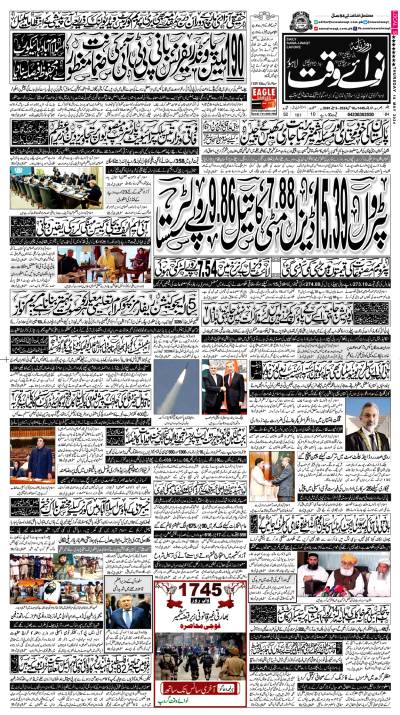Pakistan is living through difficult times afflicted by myriad problems including a struggling economy and political uncertainty. In a fast-changing world, Pakistan finds itself outpaced by its rivals, leading to a sense of exclusion within the nation. In the new emerging global scenario, nations, big and small, are entering into new partnerships and alliances to strengthen their power base and to create new sets of opportunities. Pakistan too needs to actively look for new openings with friendly countries to give a boost to its economic health, gradually build self-reliance and create greater room for diplomatic manoeuvrability.
One of the top priority areas for Pakistan is GCC countries. Saudi Arabia and the UAE have always stood by Pakistan in the most difficult times. These countries are developing and modernising at a brisk pace. The signing of the preliminary free trade agreement (FTA) between the GCC and Pakistan on 28th September is, therefore, a major step in the right direction. Ironically, the GCC Ministerial Council meeting held back in June 2004 agreed to consider concluding a Framework Agreement on Economic Cooperation between the GCC States and Pakistan along with starting FTA negotiations. The Framework Agreement was signed in Islamabad in August 2004 but FTA negotiations remained stalled. In practical terms, Pakistan conceded this precious space to its rival, India.
Take the example of India-UAE trade relations whose bilateral trade rose to USD 85 billion in 2022, making the UAE the third-largest trading partner of India and India’s second-largest export destination. In February 2022, India became the first country with which the UAE signed a Comprehensive Economic Partnership Agreement (CEPA) that aims to boost India-UAE annual bilateral to reach the USD $100 billion mark in the next five years. Interestingly, in 2015, Mr Modi became the first Prime Minister of India to visit the UAE in 34 years. Since then he has visited the UAE five times. During his last visit in July 2023, an MOU was signed for the use of local currencies for cross-border transactions. In contrast, Pakistan’s annual exports to the UAE are estimated to be worth USD 1.2 billion, while imports are around USD 7 billion.
Under the leadership of Saudi Arabia, the GCC was formed as a political and economic union, by an agreement concluded in 1981 in Riyadh. The GCC has a combined GDP of approximately USD 1.4 trillion of which Saudi Arabia and the UAE contributed 49.4 and 25.3 percent, respectively. The total population of GCC countries is 58.7 million. Saudi Arabia, the major partner in GCC is a top exporter of crude oil. Its annual oil exports are valued at USD 138 billion. Today, India is the second largest importer of oil from Saudi Arabia (USD 25.6 billion), only behind China (USD 48.7 billion). Annual Indian exports to Saudi Arabia are around USD 7 billion. Pakistan’s exports to Saudi Arabia are less than half a billion dollars.
The current number of Pakistanis working in Saudi Arabia has grown to 2.64 million, up from around 1.5 million in 2020 while over 1.5 million Pakistanis work in the UAE. Pakistani community in GCC countries is an invaluable source of much-needed remittances. They are also valuable development assets for these brotherly countries. There are good prospects for Pakistani skilled and semi-skilled manpower in development projects like NEOM.
There is a pressing need to recalibrate our ties with brotherly Saudi Arabia and the UAE to take them to new heights as development partners, away from a hand-out approach. Importantly, these two fraternal countries have promised investments of around 50 billion dollars in Pakistan in the next five years as part of a new “strategy for economic revival” to increase foreign direct investment in Pakistan under the recently set up Special Investment Facilitation Council (SIFC).
Amidst a turbulent global landscape where the United States and China take centre stage, various middle and emerging major players are engaging in multifaceted collaborations, both at global and regional scales, often without entangling themselves in the great power rivalry. Saudi Arabia is a good example. A traditional US ally, Saudi Arabia has established close ties with China which is currently the largest importer of its oil. The Kingdom is engaging with Russia as an OPEC-plus partner. Saudi Arabia is a G20 member, has become a dialogue partner of SCO and has recently been invited to join BRICS along with the UAE, Argentina, Egypt, Ethiopia and Iran.
It is well established that multi-alignment enhances a country’s options and bargaining power, both individually and as groups. Pakistan must learn its lessons. Apart from comprehensive reforms in key domestic sectors, essential adjustments are necessary in its foreign policy priorities. We also need to create new partnerships and alliances, for now with groups sans India. Top priority areas could be the GCC, the OIC and the ECO. The potential addition of China, Saudi Arabia and the UAE to the ECO could make it a formidable economic group.
Thursday, May 16, 2024
Partnerships and Alliances

The writer is a retired ambassador and Director of Foreign Affairs at the Centre for Aerospace and Security Studies (CASS), Lahore, Pakistan. He can be reached at casslahore@gmail.com.
Tariq Bashir Cheema tenders apology to Zartaj Gul over derogatory remarks
9:18 PM | May 16, 2024
SC takes suo moto notice of Faisal Vawda's press conference
6:57 PM | May 16, 2024
PFF NC Chairman, members attend 34th AFC Congress
6:18 PM | May 16, 2024
Police rescue trader after 'encounter' with outlaws in Pindi
5:23 PM | May 16, 2024
Pakistan qualifies for Central Asian Volleyball League final
5:22 PM | May 16, 2024
Rain Damage
May 16, 2024
LESCO Next
May 16, 2024
Propaganda War
May 16, 2024
Heat Alert
May 15, 2024
Tax Reform
May 15, 2024
2022 Floods - Road to Recovery
May 16, 2024
Success of Lunar Mission
May 15, 2024
Service disruption
May 15, 2024
Weather Crisis
May 15, 2024
Reforming the Wheat Purchase System
May 15, 2024
ePaper - Nawaiwaqt
Advertisement
Nawaiwaqt Group | Copyright © 2024





